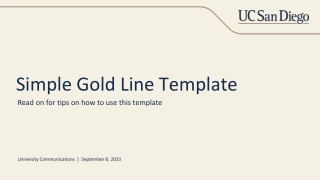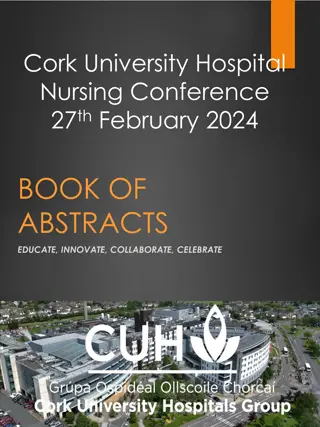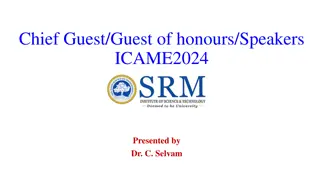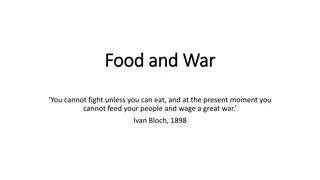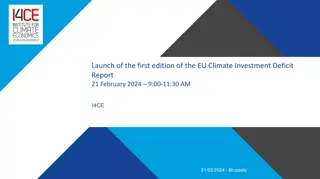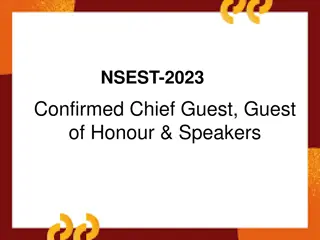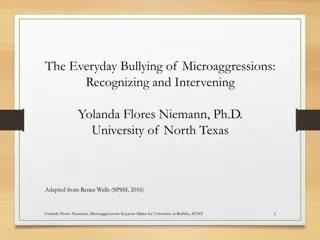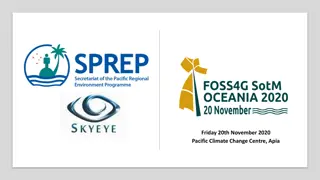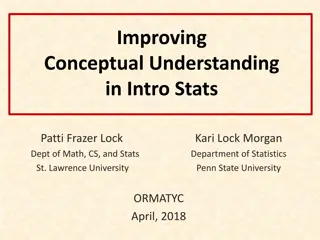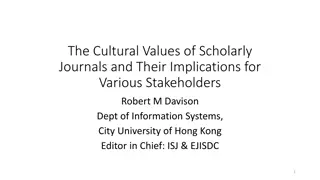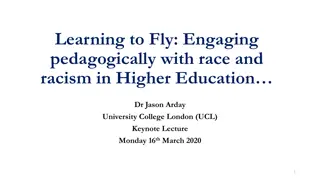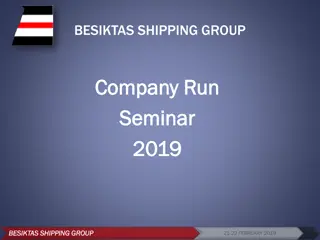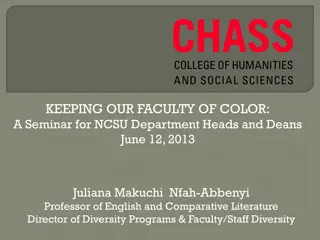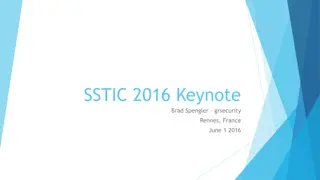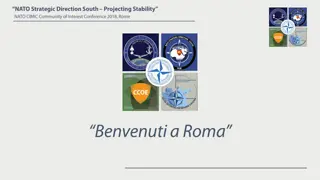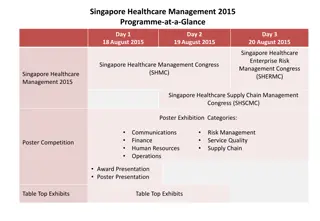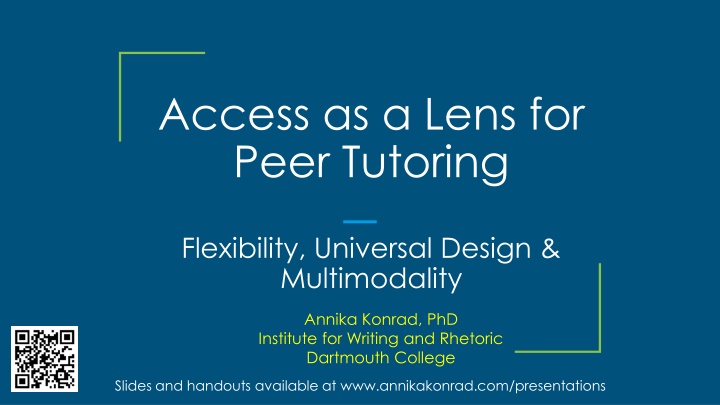
Peer Tutoring Accessibility in Writing Centers: A Comprehensive Approach
Explore the concept of access as a key lens for enhancing peer tutoring in writing centers, focusing on flexibility, universal design, and multimodality. Embrace the empowering shift from traditional classroom dynamics to promote more inclusive and engaging learning environments. Gain insights into the integration of normative commonplaces and universal design principles within writing center practices to better support students with disabilities.
Download Presentation

Please find below an Image/Link to download the presentation.
The content on the website is provided AS IS for your information and personal use only. It may not be sold, licensed, or shared on other websites without obtaining consent from the author. If you encounter any issues during the download, it is possible that the publisher has removed the file from their server.
You are allowed to download the files provided on this website for personal or commercial use, subject to the condition that they are used lawfully. All files are the property of their respective owners.
The content on the website is provided AS IS for your information and personal use only. It may not be sold, licensed, or shared on other websites without obtaining consent from the author.
E N D
Presentation Transcript
Access as a Lens for Peer Tutoring Flexibility, Universal Design & Multimodality Annika Konrad, PhD Institute for Writing and Rhetoric Dartmouth College Slides and handouts available at www.annikakonrad.com/presentations
Lisa And the kids loved it because it was so empowering for them to not have to be controlled by a hand raise.
Lisa Employers And the kids loved it because it was so empowering for them to not have to be controlled by a hand raise. You don t have control of the classroom because they re not raising their hands.
Lisa Employers And the kids loved it because it was so empowering for them to not have to be controlled by a hand raise. You don t have control of the classroom because they re not raising their hands. That s brilliant because it s teaching them how to have conversation rather than dictating!
the ideological resources available in workplaces for making arguments that define where, when, how, and by whom work is performed and how work is measured. Normative Commonplaces
Where do they live in writing centers? Normative Commonplaces How can we reimagine them?
19% of undergraduate students in the U.S. have a disability
Agenda What is Access? Universal Design Application to Writing Center Practice Planning Future Action and Take-aways
What Access Looks Like For me For you Volunteer to moderate Help with media www.annikakonrad.com > Presentations Visual information will be read aloud or described Clear and simple language Use this space as you need Communicate with me Ways you can participate State your name Eye contact iPad is a point of access Ask questions
What Access Looks Like For you www.annikakonrad.com Presentations Visual information will be read aloud or described Clear and simple language Use this space as you need Communicate with me
Agenda What is Access? Universal Design Application to Writing Center Practice Planning Future Action and Take-aways
Access is the ability to use, enjoy, perform, work on, avail of, and participate in a resource, technology, activity, opportunity, or product at an equal or comparable level with others. Separate is not equal and before or after the fact is also not equal Sushil Oswal, Multimodality in Motion, 2014
Access is the ability to use, enjoy, perform, work on, avail of, and participate in a resource, technology, activity, opportunity, or product at an equal or comparable level with others. Separate is not equal and before or after the fact is also not equal Sushil Oswal, Multimodality in Motion, 2014 Think of a time when you (or someone you know) did not have access to something. How did this make you feel? What did you do? Who or what helped you reach your goal?
Reflection in Pairs How do these experiences make us feel? What could have been done to help? How would it have felt if the barriers had been removed?
Agenda What is Access? Universal Design Application to Writing Center Practice Planning Future Action and Take-aways
Universal Design Universal Design is the design of products and environments to be usable by everyone, to the greatest extent possible, without the need for adaptation or specialized design. Ron Mace (1941-1998), Creator of the concept and the term Universal Design, and Fellow of the American Institute of Architects
Universal Design for Learning https://www.youtube.com/watch?v=AGQ_7K35ysA
Agenda What is Access? Universal Design Application to Writing Center Practice Planning Future Action and Take-aways
Example Scenario Kelly, a peer tutor, is meeting with Michael, a first-year student for the first time. Kelly is finding it difficult to engage Michael in conversation. Michael looks out the window during the entire conference and does not make eye contact once. He does not provide any questions or comments on his own work and only responds to Kelly s questions when she asks directly. Even when using direct questions, she has a difficult time getting him to say more than two sentences in an entire conference. He does not appear upset or confrontational, and he has not provided any explanation for his silence. How might Kelly engage Michael?
Example Scenario Normative Commonplace: what student engagement looks like UDL strategies: writing, chatting, listening, moving
Applying UDL to Peer Tutoring Pick 1-2 scenarios You have 2 goals 1. Identify at least one commonplace that gets in the way 2. Identify at least one new or more flexible way of tutoring Use principles of UDL to brainstorm strategies (see handout)
Scenario 1 Nelson is a regular in the Writing Center. He is a senior working on a long writing project for an incomplete he received for a course he took the previous semester. He needs to finish the writing project this semester in order to graduate on time. Hannah, a peer tutor, has been trying to help Nelson plan his long project by breaking it up into smaller steps and scheduling writing tasks for Nelson. Every time Hannah sets goals for Nelson to complete by their next meeting, however, Nelson does not meet the goals. He tells Hannah that he has trouble getting words on a page and that he spends hours staring at a blank screen. Nelson has not disclosed a disability or relationship with the disability resource center. What can Hannah do to help Nelson complete his project?
Scenario 2 In a writing center conference, a student writer, Leo, discloses a mental disability that requires that they type in order to communicate and process language. The peer tutor, Arthur, is ready to be flexible but he realizes that the student s need to type conflicts with his own reliance on and preference for auditory processing and reading the student writer s tone and body language. Arthur is concerned about his own ability to read emotion and tone while Leo types. How should Arthur go about constructing a situation that is accessible for both of the tutor and the student writer?
Scenario 3 Valerie, a peer tutor, is about to meet with a student writer, Eric, for the second time. Eric seemed to really enjoy their first conference, but Valerie is worried about her second conference with Eric because he talked so much that their conversation went way over time and he often strayed from the topic at hand. Valerie also noticed that Eric seemed quite distracted and left the table a couple of times, making their conference really long. Valerie appreciates Eric s enthusiasm, but she worries about how to keep the conversation focused and make sure they don t go over time. How should Valerie approach her second conference with Eric?
Scenario 4 Maria, who is blind, uses screen reading software to read (software that reads computer text aloud to the user) and text-to-speech software to write. Because text-to-speech software is not always accurate, Maria s writing is full of incorrect words, missing formatting, and incorrect or missing punctuation. Since Maria can t see the text, however, her peer tutor, Ben, is unsure how to help Maria detect these errors on her own and he worries that pointing all of them out would make her self-conscious about her writing. How should Ben approach this situation?
Scenario 5 Anna is a peer tutor who has ADHD. While she loves her work in the writing center, she finds it difficult to concentrate while student writers are reading their papers aloud, especially when the papers are longer than a few pages. Anna finds that when the writer is done reading, she hasn t comprehended most of the paper. Anna is not comfortable disclosing her disability to the writers she meets with. What can she do to make the work of peer tutoring more accessible for herself?
Scenario 6 Jasmine is meeting with a student writer, Nolan, for the first time and immediately when Nolan starts speaking, Jasmine recognizes that she has a hard time understanding his speech. Jasmine notices that Nolan doesn t show any signs that he is aware Jasmine might have trouble understanding his speech he appears comfortable and continues talking to Jasmine about his writing and at times Nolan gets up and starts walking around as he s telling Jasmine about his paper. Once they reach the point of reading Nolan s draft, Jasmine is not sure whether to ask Nolan to read his paper aloud and what she should do about struggling to understand his speech.
Agenda What is Access? Universal Design Application to Writing Center Practice Planning Future Action and Take-aways
Critiques of Universal Design Why do we need to make something useful for all in order for it to be accessible to people with disabilities? It can elide or erase disability. Who is getting excluded while we expand access for all ? There is no access utopia.
General strategies to keep in mind Peer tutoring is not a fixed model Be flexible with time, space, and tools Offer multiple different options Develop a relationship with your office of disability services Examine the physical and digital spaces Consider your hiring practices Pay attention to your own access needs You don t have to do it perfectly
Reflections on Applications of UDL What practices have you already used in your writing center that help create access? What strategies, tools, concepts, practices, habits could you introduce to your writing center that would help create access? Who on your campus would be a good resource for developing a more accessible writing center and what questions might you ask them?
Call to Action Pre-emptive Everyone participates in making what is noticed and imagined as disability (Tanya Titchkosky, 2011). Proactive Creative Anticipatory Interdependent Culture of Access
Thank you! Feel free to contact me with thoughts, questions, ideas at annika.m.konrad@dartmouth.edu annikakonrad@gmail.com Learn more about my work at annikakonrad.com
Where to look to learn more Allison Hitt, Access for All: The Role of Disability in Multiliteracy Centers. Praxis: Aiting Center Journal 9.2 Alexandra (Sasha) Yambor, Writing Center Tutors and Students with Learning Disabilities: Perceptions, Feelings, and Tutoring Strategies Queen City Writers, 4.2 Elizabeth Kleinfeld, Taking an Expansive View of Accessibility: The Writing Center at Metropolitan State University of Denver Composition Forum 39, 2018 Rebecca Day Babcock and Sharifa Daniels, Writing Centers and Disability, Fountainhead Press, 2017

